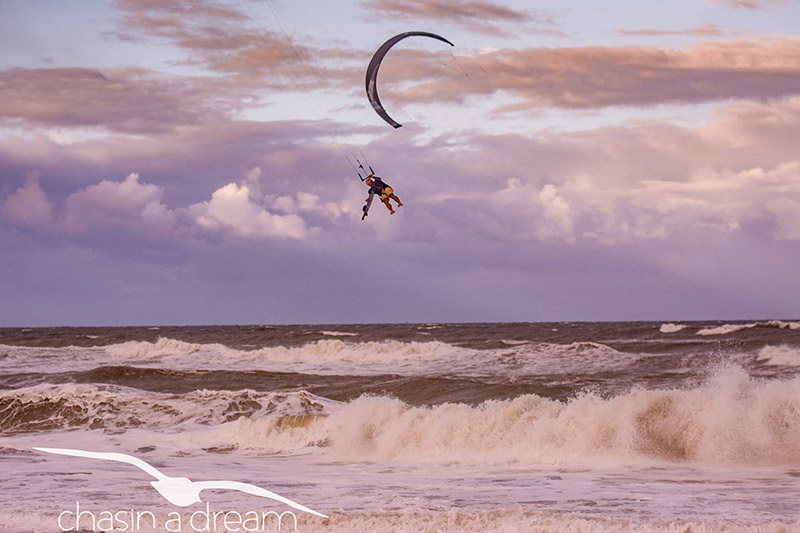
Kiteboarding is often thought of as an “extreme sport” but in reality most people practice the sport in a relatively conservative manner with reasonable conditions. There are however a small percentage of athletes who test the limits of the sport and themselves. These kiteboarders push the boundaries to discover what is truly possible. It must be said that pushing limits to world records can be extremely dangerous. Kiting professionals attempting world records have been practicing the sport for years, fully understand their risks, and take proper safety precautions to mitigate danger. Let us take a look at a few of the most impressive world records in the sport.
Distance
Most kiters feel the exhaustion towards the end of a 2-to-3-hour long session and finally agree with their body to pack it in for the day. Imagine kiting for 24 hours. All day and all night. Now double that and that is how long it took Francisco Lufinha to achieve his record distance of 539 nautical miles of non-stop kiting off Portugal according to surfertoday.com. The average speed of Francisco’s journey turns out to be about 11.2 knots or just under 13 miles per hour. It may go without saying that this record was a test of endurance and mental fortitude above all else.
Speed
To the average person, buzzing at 15 knots over the water strapped to a kite may feel faster than 60 miles-per-hour in a car. Even to experienced kiters much over 20 knots feels incredibly fast. There is a special event in southwest Namibia where riders challenge themselves to sail as fast as physically possible. According to Luderitz-speed.com Frenchman Alexandre Caizergues achieved an incredible speed of 56.62 knots in 2013. 56.62 knots is just over 65 miles-per-hour. To achieve this record speed, Alexandre used specialized gear and protective equipment, as well as a a man-made canal called a “speed-slick” to reduce any unfavorable environmental factors that may slow the riders down. The most incredible part of this record is that the 56.62 knots isn’t even the top overall speed reached, it is the average speed over a 500-meter distance, which the challenge uses to determine the record.
Height
Since the beginning of the sport, record high jumps have been some of the most impressive things to witness in kiteboarding. Although there is not a single definitive world record for “highest jump” there are a few out there in contention for the title. One of the contestants is the kiteboarder Phil Morstad who achieved a jump of 70.1 feet using a new kiteboard tracking app called Woo to record his height. Even more recently kiter Nick Jacobsen used the same app to record a jump height of an insane 87.6 feet according to woosports.com. An extreme amount of force and tension is required for these kiters to achieve these heights and it takes a true professional to understand the physics behind these jumps.
Records are meant to be broken. As kiteboarding grows, as gear is improved, and as the reality of what is possible is broadened the above records will fade and be replaced with bigger and better achievements. Let us appreciate the time, focus, and sacrifice that goes into training for and attempting these world records.
Jeremy Lund
Lead instructor and owner of New Wave Kiteboarding
Email: Jeremy@newwavekiteboarding.com
Website: NewWaveKiteboarding.com
Find us at Sailfish Marina in Stuart, FL
(561) 633-9362




